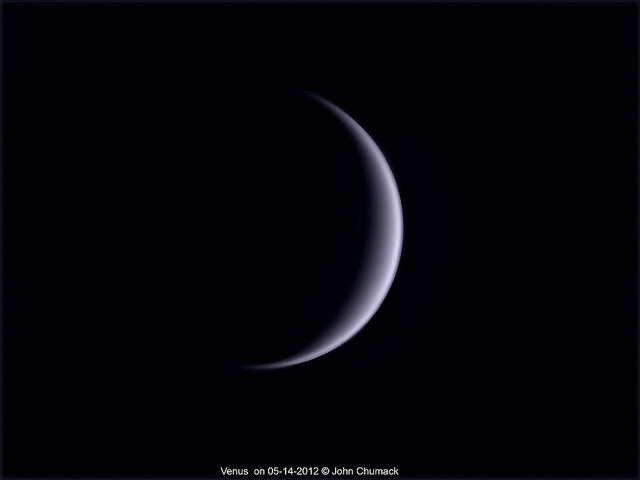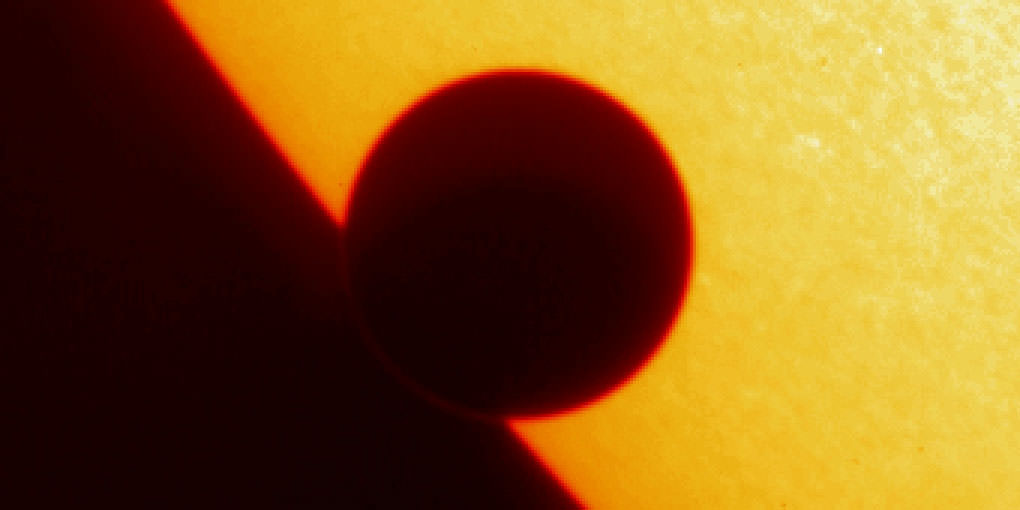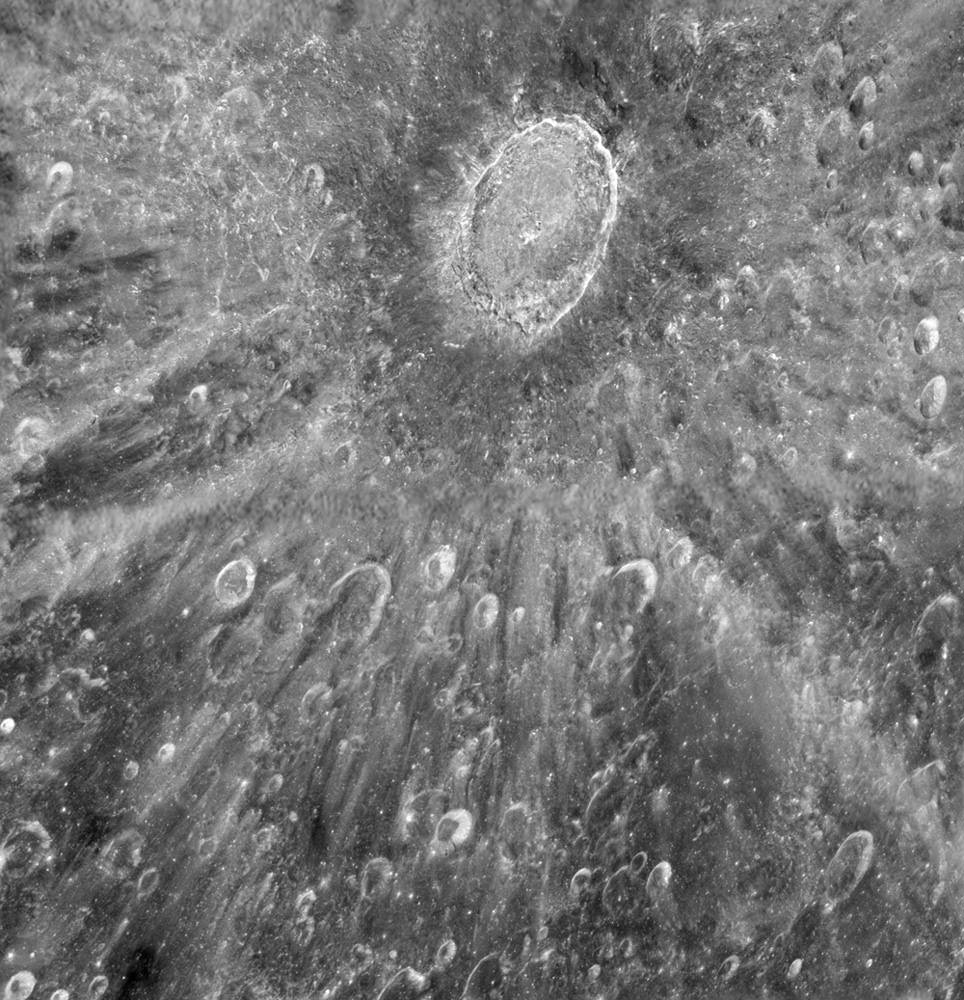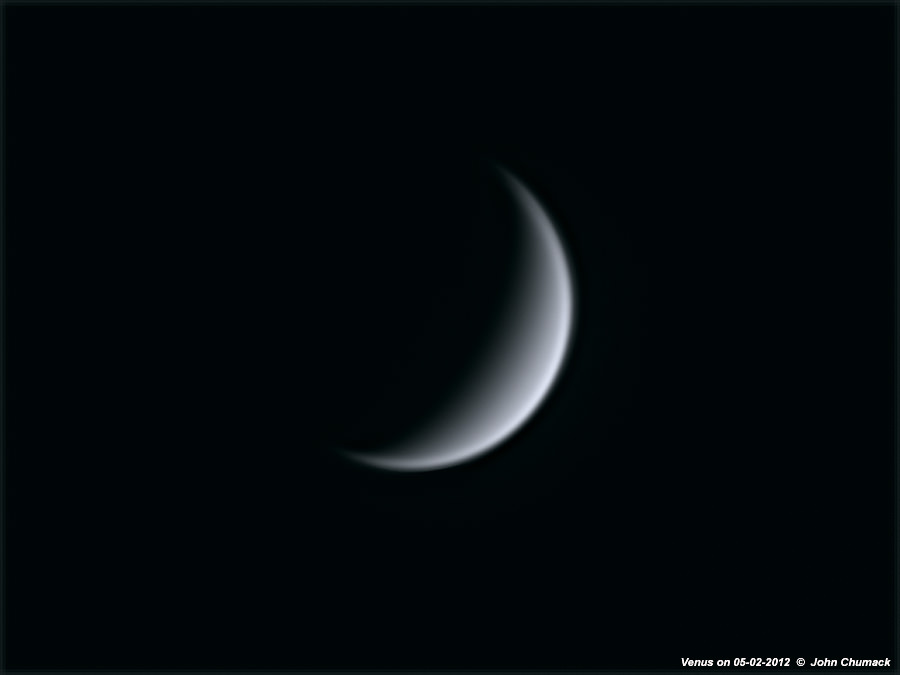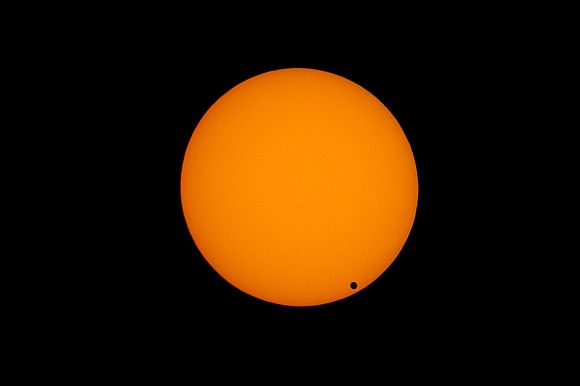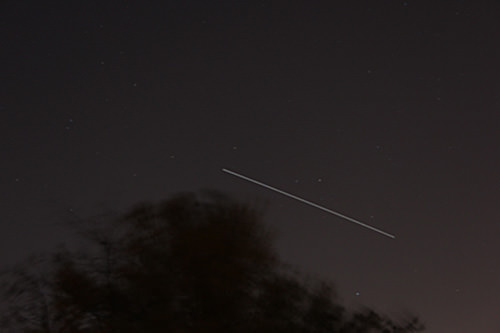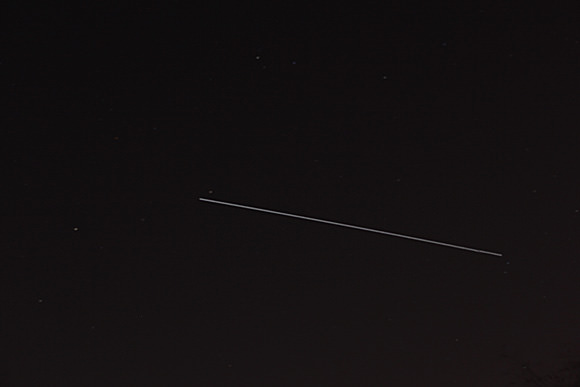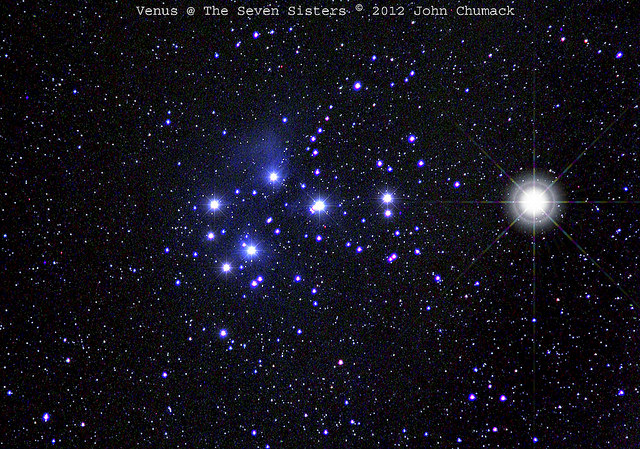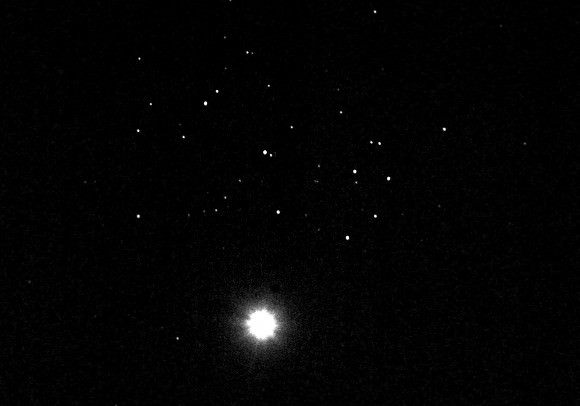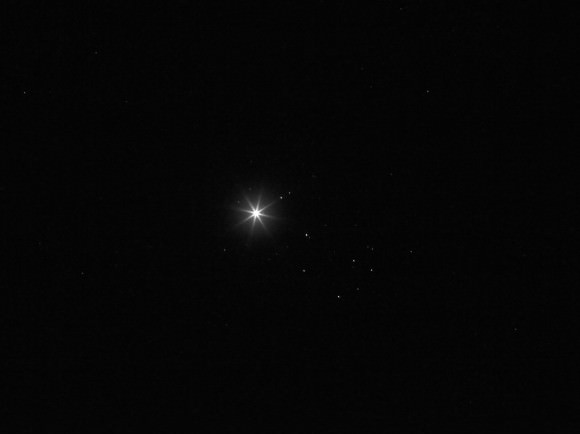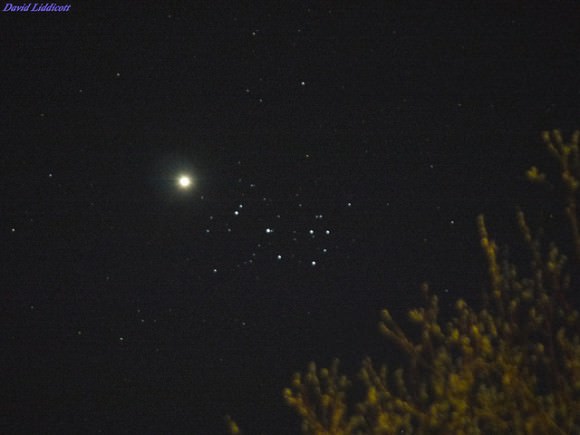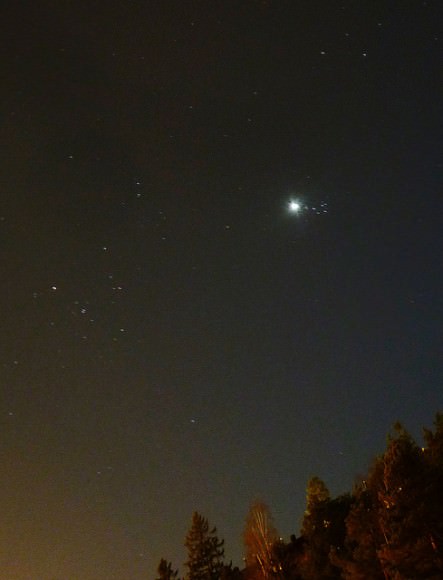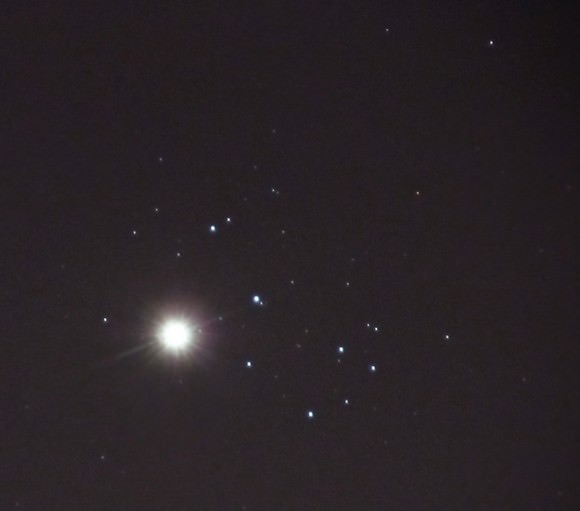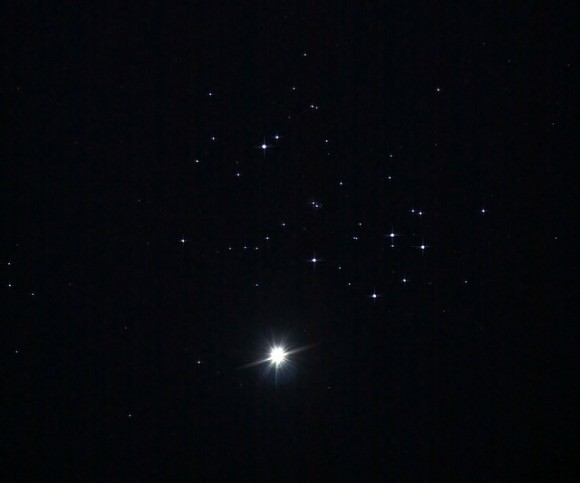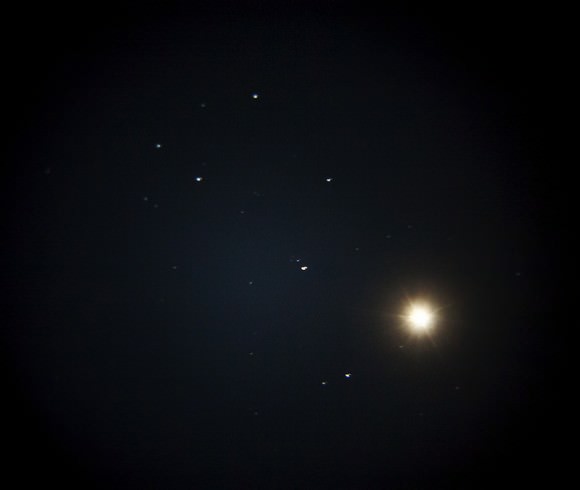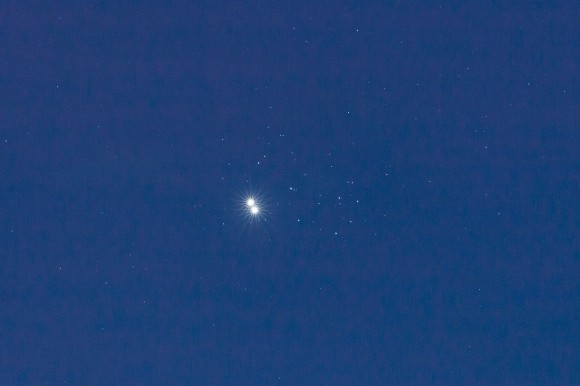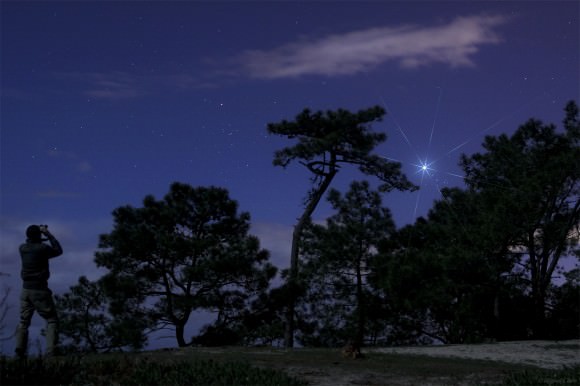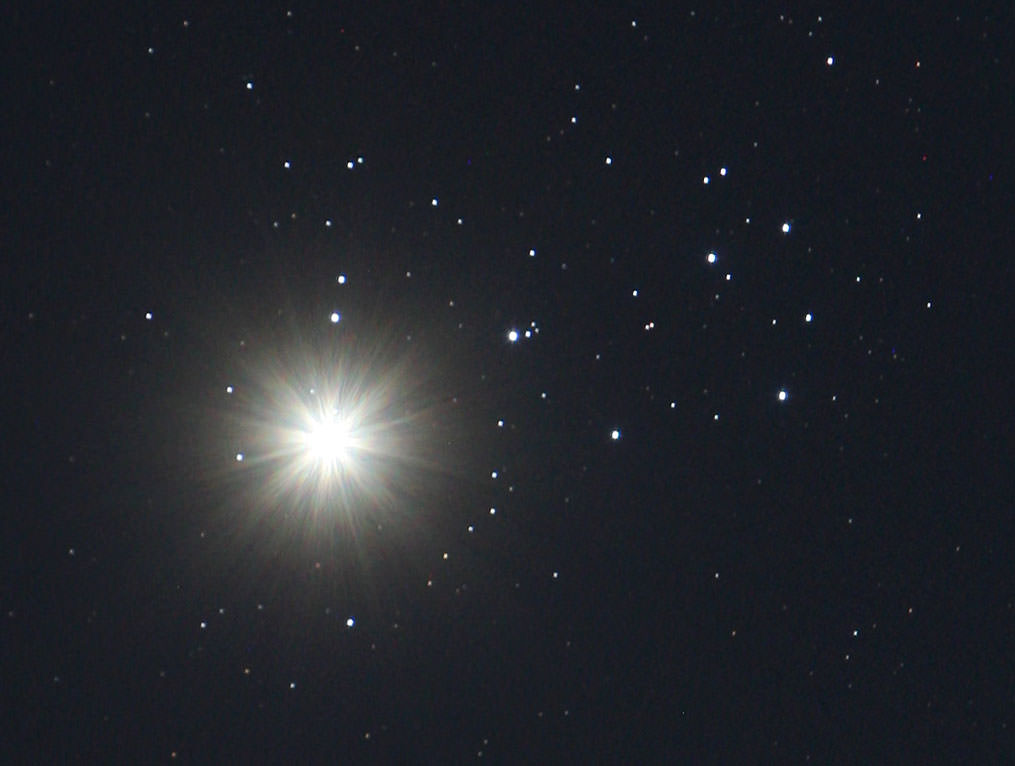A Boulder Side of Venus – Conjunctions 2012 from Patrick Cullis on Vimeo.
So far, 2012 has brought us a plethora of planetary conjunctions, with Venus pairing with the Moon, Jupiter and the Pleiades. Not all at the same time, of course, but photographer Patrick Cullis has put them all together in this wonderful timelapse mashup video, which includes the beautiful foreground of the Flatirons of Boulder, CO. “Jupiter and Venus dominated the early days of March, coming within 3 degrees of one another,” writes Patrick. “Then, Venus passed a crescent moon on its way to a meeting with the Seven Sisters, also known as the Pleiades.”
And we’re all waiting for this year’s big conjunction on June 5 or 6, 2012, depending on your location, then the tiny disk of Venus will glide across the face of the Sun. That won’t happen again until 2117.
To complete our conjunction mashup, we’ve got a really unique image, below, of a triple conjunction between 3 different objects, Venus, The Pleiades and an airplane taken on April 4, sent to us by Shahrin Ahmad in Malaysia, PLUS, a wonderful new poem by space’s poet laureate, Stuart Atkinson, about his experiences viewing the recent conjunctions. It’s a must read for any amateur astronomer, putting to words the joys — and disappointments — of lifting your eyes to the heavens!
[/caption]
CONJUNCTION
By Stuart Atkinson
For weeks I watched them drift towards each other,
Approaching shyly, slyly; two would-be lovers
From a Jane Austen dance, casting furtive glances
Across the ballroom of the golden twilight,
Eyes for no-one else as nightfall drew near.
Venus – lovely and lantern-bright, out-shining
Every other dancer on the floor; Jupiter – fainter
By far but still beaming with a noble light,
Stalking his pretty planetary prey…
The first time I saw them they were still
A third-of-the-sky apart,
But each blazing Turner sunset brought them closer yet,
Each day’s end a little better-placed to gaze
Upon each other’s radiant face,
And a million Earthbound eyes looked on, amazed
To see two such fine celestial jewels
Coming together in the sky.
Some sought out a sheltered, grassy place
Of peace and dark to watch the twin sparks’
Close approach in groups; others stood alone
In overgrown gardens or on concrete roofs,
Marvelling at the view from their light-polluted
Homes, wondering what they would see if only
They could escape the Bright and find a place
Without the blinding security lights’ flares
And streetlights’ orange glare…
Of course, I missed the breathless climax
Of their brief encounter. For half a dozen days
Either side of that ringed-in-red date
My sky was thick with cloud fat and foul,
A star- and planet-hiding shroud draped o’er
The Auld Grey Town that was not pulled away
Until the planet parade had passed by,
And the next time I looked to the west
The best view had come and gone:
Unseen by me, Venus and Jupiter had chastely
Touched fingers then parted, leaving
The lovesick gas giant fading, falling
Forlornly towards the rooftops and trees
While the Goddess of Love soared higher,
Growing ever-brighter as she climbed…
Cheated? Yes. But I have fine memories
Of some magical nights, and a hundred photographs,
Taken from the shores of moonlit, duck-dotted lakes
And crumbling castle walls. Sometimes in company,
More usually alone I stood and watched those distant
Worlds waltzing across the western sky,
My so-often-now world weary eyes
Suddenly wide again with wonder at the beauty of it all,
Listening to them calling “Look at us! See
How gloriously we shine above your sleepy little town…!”
…Far apart now, their dusky dalliance a thing of the past,
Venus and Jupiter are just bright stars once more;
The night sky’s restless showbiz spotlight has swept on,
Picking out Saturn, Mars and a waning Moon,
The Great Conjunction relegated
To Celestial Celebrity Has Been history.
Which is how it should be.
The Earth turns, and turns, and turns, setting a universe
Of stars and planets wheeling around pale Polaris,
Lovely and sentinel-still,
While the Milky Way floats serenely
Through her snow-globe of glitter-flake galaxies,
The prickling breeze of a billion billion suns’ solar winds
Blowing on the faces of the few evolved apes
Brave enough to lift their eyes from the grey
Landscapes of their everyday lives and catch
A fleeting glimpse of beauty in the Great Beyond…
© Stuart Atkinson 2012


